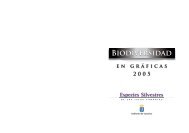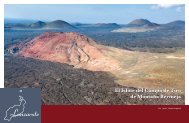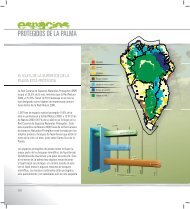Adapting the IUCN Red List criteria for invertebrates - Dr. José L ...
Adapting the IUCN Red List criteria for invertebrates - Dr. José L ...
Adapting the IUCN Red List criteria for invertebrates - Dr. José L ...
You also want an ePaper? Increase the reach of your titles
YUMPU automatically turns print PDFs into web optimized ePapers that Google loves.
In many cases, it was impossible to assess whe<strong>the</strong>r <strong>the</strong>re was a<br />
continuing decline in EOO or AOO and, if so, <strong>the</strong> causes (Fig. 1;<br />
Appendix 1). Such assessment was only possible <strong>for</strong> species with<br />
restricted habitat preferences where <strong>the</strong> decline was inferred from<br />
a decline in habitat area and/or quality. Extreme fluctuations were<br />
impossible to assess in all but a few species that were very common<br />
and <strong>the</strong>re<strong>for</strong>e did not present such fluctuations.<br />
P. Cardoso et al. / Biological Conservation 144 (2011) 2432–2440 2437<br />
Fig. 1. Data of extent of occurrence, Area of Occupancy and number of locations <strong>for</strong> <strong>the</strong> 48 species evaluated in this study.<br />
The number of known locations was low in most cases except<br />
<strong>for</strong> species classified a priori as common (Fig. 1). A continuous decline<br />
in <strong>the</strong> number of locations was impossible to assess in half<br />
<strong>the</strong> cases. When it was possible to reach some conclusion, it was<br />
necessary to infer a decline in <strong>the</strong> number of locations from a decline<br />
in AOO, which, as described above, was inferred from a decline<br />
in habitat area and/or quality.





